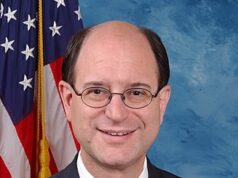EPA Highlights Over $4 Million Brownfields Investment in Waterbury
WATERBURY, CONN. – RealEstateRama – The U.S. Environmental Protection Agency’s (EPA) Deputy Administrator Janet McCabe and EPA New England Regional Administrator David Cash, along with Senator Blumenthal, Senator Murphy, Congresswoman DeLauro, Connecticut Department of Energy and Environmental Protection (CT DEEP) Commissioner Katie Dykes, Waterbury Mayor Neil O’Leary and Naugatuck Valley Council of Governments Executive Director Rick Dunne, highlighted the $4,050,000 investment in Waterbury made possible by the Bipartisan Infrastructure Law to revitalize communities across the country by cleaning up contaminated and blighted sites and redeveloping them for productive uses.
“Thanks to the Bipartisan Infrastructure Law and President Biden’s leadership, EPA’s Brownfields program is making a record investment of more than $4 million to revitalize sites throughout Waterbury and the Naugatuck Valley,” said EPA New England Regional Administrator David W. Cash. “Both the City of Waterbury and the Council have earned EPA brownfields funding in the past and continue to run successful programs repurposing sites for redevelopment. Today’s investment of EPA Brownfields assessment and cleanup funding will jump start economic redevelopment and job creation in an underserved community as we work to turn environmental risks into economic assets.”
The City of Waterbury will receive a site-specific assessment grant of $150,000 for the Former Button Factory at 835 South Main Street in Waterbury.
EPA’s Brownfields Revolving Loan Fund (RLF) grants provide funding for a grant recipient to capitalize a revolving loan fund and to provide loans and subgrants to carry out cleanup activities at brownfield sites. Through these grants, EPA strengthens the marketplace and encourages stakeholders to leverage resources to clean up and redevelop brownfields. When loans are repaid, the loan amount is returned into the fund and re-lent to other borrowers, providing an ongoing source of capital within a community.
The Naugatuck Valley Council of Governments, of Waterbury, is receiving an additional $3,900,000 to supplement their successful revolving loan fund program which serves the Naugatuck Valley area.
The Council was selected for supplemental RLF funding because the organization has demonstrated success in using their revolving loan funds to clean up and redevelop brownfield sites. The supplemental funds will be used to continue their progress in revitalizing vacant and abandoned properties and turning them into community assets such as housing, recreation and open space, health facilities, social services, and commerce opportunities.
Brownfields sites often lie in proximity to overburdened and vulnerable communities where people live, work, play, and pray. These funds serve to support underserved and economically disadvantaged communities in assessing and cleaning up abandoned industrial and commercial properties and are part of a historic national EPA investment in Brownfields remediation. Brownfields funding helps begin to address the economic, social, and environmental challenges that have burdened these communities for far too long.
The new Brownfields funding announced this year includes approximately $180 million from the historic $1.5 billion investment from the Bipartisan Infrastructure Law to help turn brownfield sites across the nation into hubs of economic growth and job creation, along with more than $75 million from appropriated funds.
“This critical federal funding is a major investment in the Naugatuck Valley that will create jobs and help transform polluted land into economically viable and environmentally safe parcels that communities will use for years to come. These much-needed awards assist our communities in protecting the health of residents, incentivizing economic growth and development, and improving the quality of life for all. I am proud to support this grant and will continue fighting for future funds for Connecticut,” said U.S. Senator Richard Blumenthal.
“The EPA’s nearly $7 million investment in brownfield cleanup across Connecticut will have a major impact on our local economy and help transform these abandoned sites into new businesses, housing, and more. This grant is yet another example of how funding from the Bipartisan Infrastructure Law is making a big difference in our communities,” said U.S. Senator Chris Murphy.
“The Bipartisan Infrastructure Law delivered the single-largest investment in U.S. brownfields infrastructure. The funds announced today by EPA will help to begin brownfield remediation projects across Connecticut that urgently need them, and I am proud that we have secured $5.05 million for brownfield remediation in Connecticut’s Third District. Connecticut, and in particular the Naugatuck Valley, is home to some of the oldest industrial properties in the country. Remediating and redeveloping these sites is key to the economic growth of many of our communities. This is about keeping our neighborhoods sustainable, enhancing climate resiliency, and protecting the people who call these communities home. As Chair of the House Appropriations Committee, I remain steadfast in my commitment to keep fighting for investments in brownfield remediation in Connecticut and across the country,” said U.S. Congresswoman Rosa DeLauro.
“Brownfield remediation is vital to the economic development, environmental safety, and public health of our community” said Congresswoman Hayes. “I have fought for brownfield remediation funds in every annual budget and infrastructure package since entering Congress. I am thrilled that over $4 million dollars will go to Waterbury and surrounding communities for the assessment and redevelopment of brownfield sites. This funding will bring a cleaner, healthier environment and increased economic opportunity for areas that have faced obstacles to growth,” said U.S. Congresswoman Jahana Hayes.
“DEEP greatly appreciates EPA’s continuing commitment to brownfields redevelopment in Connecticut,” said Connecticut Department of Energy & Environmental Protection Commissioner Katie Dykes. “DEEP is proud to continue to partner with EPA, and with cities, towns, and with non- profit and for- profit developers to facilitate cleanup and redevelopment of brownfields in large and small communities across Connecticut. DEEP congratulates the City of Waterbury and the Naugatuck Valley Council of Governments on their success in EPA’s brownfields grant competition, and we look forward to witnessing the transformation of the former Button Factory in Waterbury and sites in the Naugatuck Valley area into safe, productive community assets.”
“Our industrial past has left us with many brownfield sites,” said City of Waterbury Mayor Neil O’Leary. “However, with the support of the EPA, we have been able to make significant strides in reclaiming these properties, putting them back to use, creating jobs and expanding our tax base”.
“With this grant NVCOG will continue to spur the transformation of blighted properties into bankable development deals. The ability to make the crucial up-front investment in disadvantaged communities ensures we can continue to facilitate safer neighborhoods for families and business,” said Naugatuck Valley Council of Governments Executive Director Rick Dunne.
EPA’s Brownfields grants and assistance to Waterbury this year is among other significant annual investments by EPA to help New England communities to address brownfield properties. Across the six New England states this year, EPA will be awarding a total of $51,285,200 to assess or clean contaminated brownfields sites in 42 communities.
In New England, since the beginning of the Brownfields program, EPA has awarded $125 million in assessment grant funding, $122 million in revolving loan fund grants and supplemental funding and $87 million in cleanup grant funding, totaling $334 million. These grant funds have paved the way for more than $4 billion in public and private cleanup and redevelopment investment and for over 23,000 jobs in assessment, cleanup, construction and redevelopment.
Background
A brownfield is a property for which the expansion, redevelopment, or reuse may be complicated by the presence or potential presence of a hazardous substance, pollutant, or contaminant.
Redevelopment made possible through the program includes everything from grocery stores and affordable housing to health centers, museums, greenways, and solar farms.
The Brownfields Program delivers on the Biden Administration’s Justive40 initiative, which states that at least 40 percent of the benefits of certain government programs flow to disadvantaged communities. EPA is committed to meeting and exceeding this goal.
This funding helps communities begin to address the economic, social, and environmental challenges caused by brownfields by stimulating economic opportunity and environmental revitalization in historically overburdened communities.












